Creating a winter habitat for wild birds can increase the diversity of wildlife in your backyard and help vulnerable species make it through the cold winter months. By choosing the right plants, adding a water feature, and other elements, you can make your backyard irresistible to non-migratory birds and other creatures.
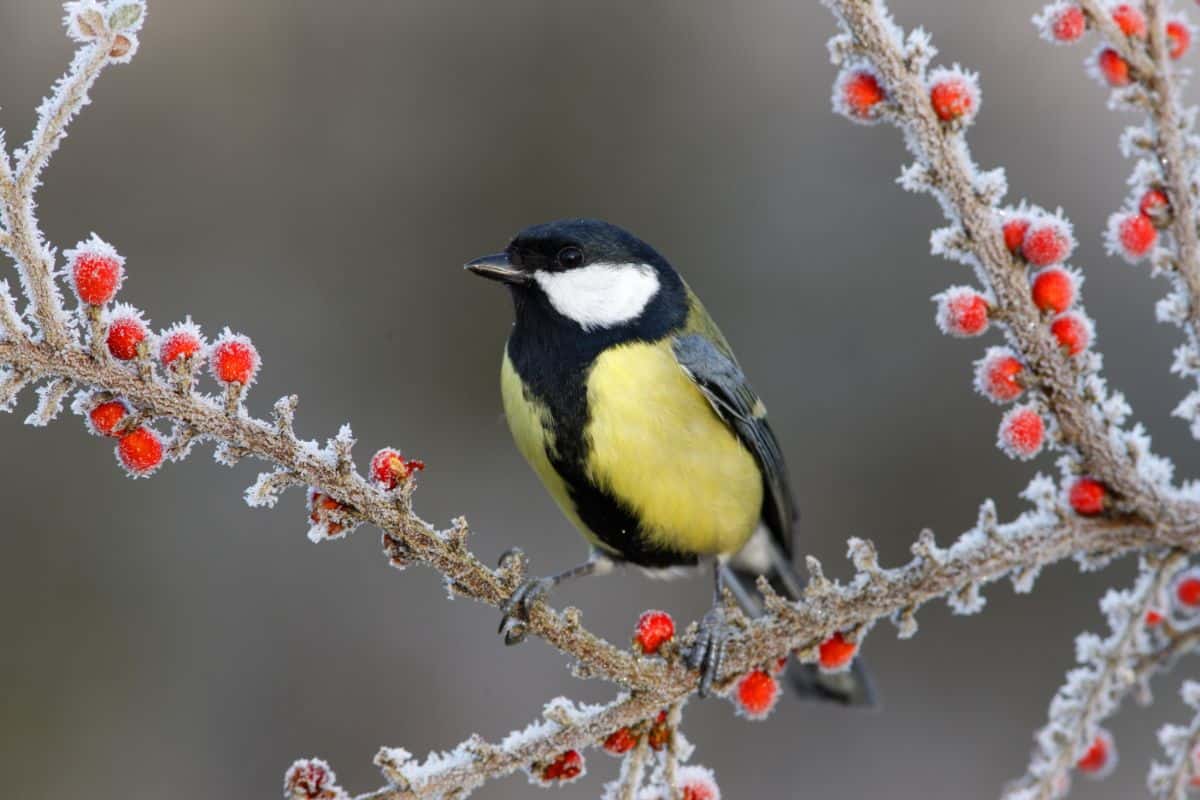
In this article, we’ll explore the top elements to include in your winter garden to attract birds and other wildlife. While you don’t need to follow every suggestion in your own garden, the more features you add, the more bird species you’re likely to attract.
So, read on for our top tips on how to create the absolute best winter garden for birds.
Jump to:
- 12 Tips for Creating a Winter Bird Habitat
- 1. Create diversity
- 2. Add native plants
- 3. Use feeders properly
- 4. Try out different foods
- 5. Install a heated birdbath
- 6. Plant evergreens
- 7. Don’t make beds “too tidy”
- 8. Hang roosting boxes
- 9. Choose plants with long lasting seeds and berries
- 10. Attract insects
- 11. Provide suet
- 12. Plant in clusters
- Frequently asked questions
- Summary
12 Tips for Creating a Winter Bird Habitat
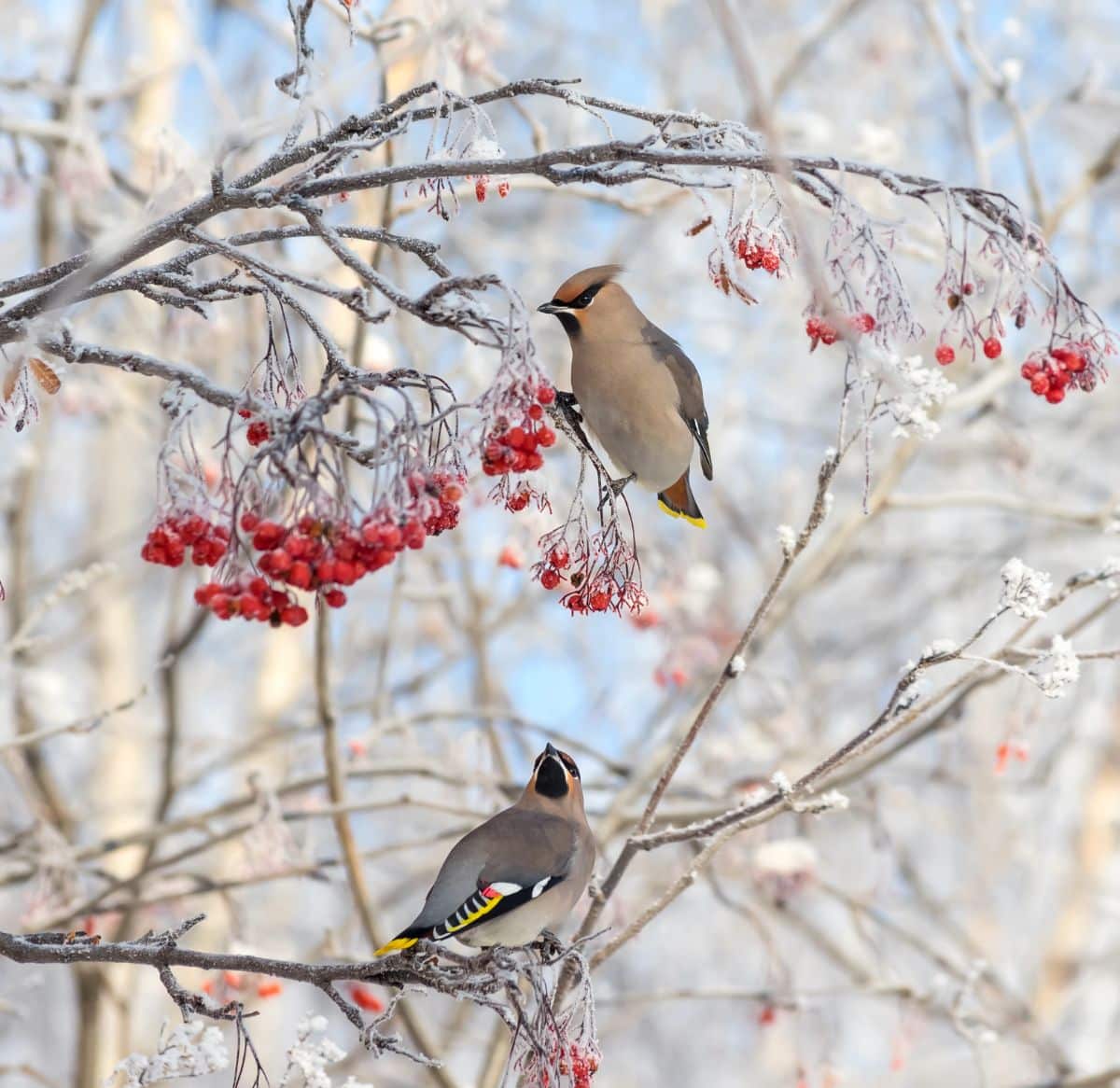
Below are our favorite ideas for making your backyard a winter bird habitat. Even if you have a small garden space or just a backyard patio, you’ll still find plenty of suggestions on this list that are small-space friendly!
1. Create diversity
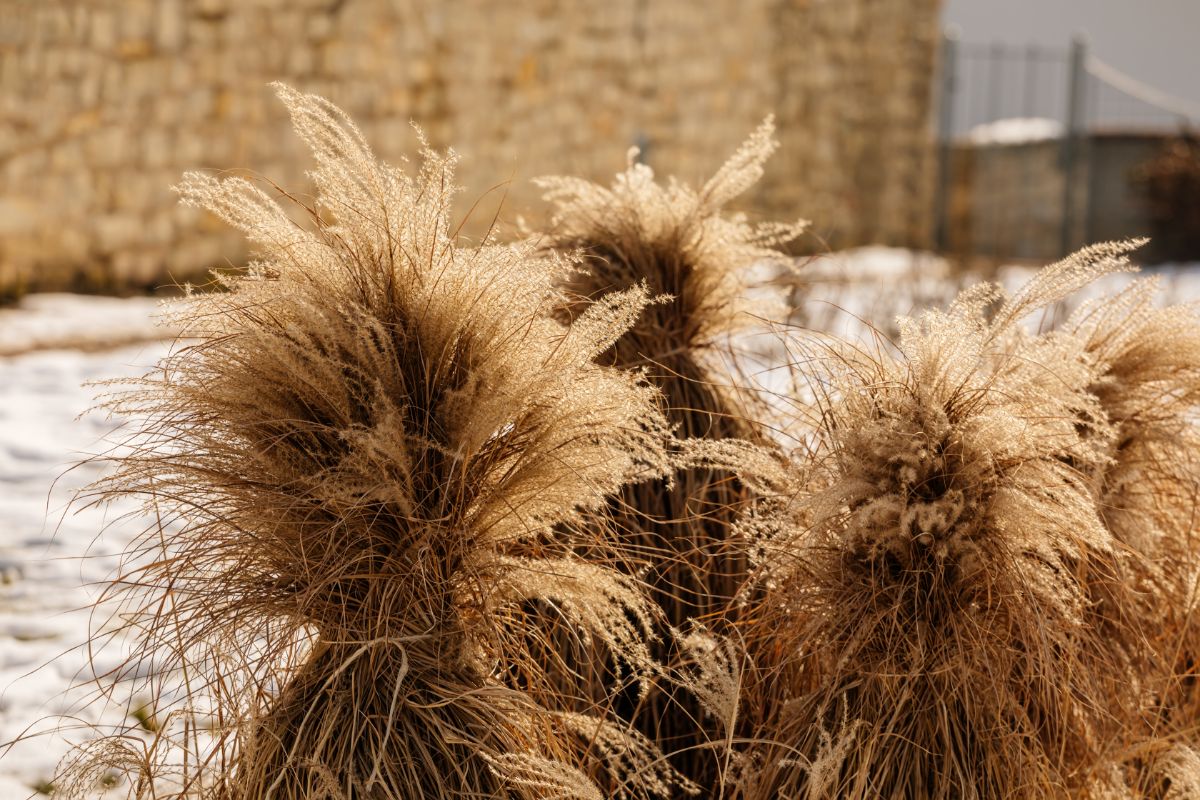
Not all birds share the same diet and habitat preferences, so the more diversity you can add to your garden, the better. If you know what sorts of non-migratory birds frequent your area in winter, you can specifically design your garden for their needs; however, for maximum impact, adding as much variety as possible is usually a safe bet.
Many birds are omnivores, but some birds are frugivores (fruit-eating), nectivores (nectar-eating), insectivores (insect-eating) and graminivores (seed-eating), so keep this in mind when planting your garden. If possible, try to add plants that meet as many needs as possible, such as providing a ready source of shelter, nectar and seeds. By choosing plants with multiple benefits for visiting birds, you’ll maximize your gardening space.
2. Add native plants
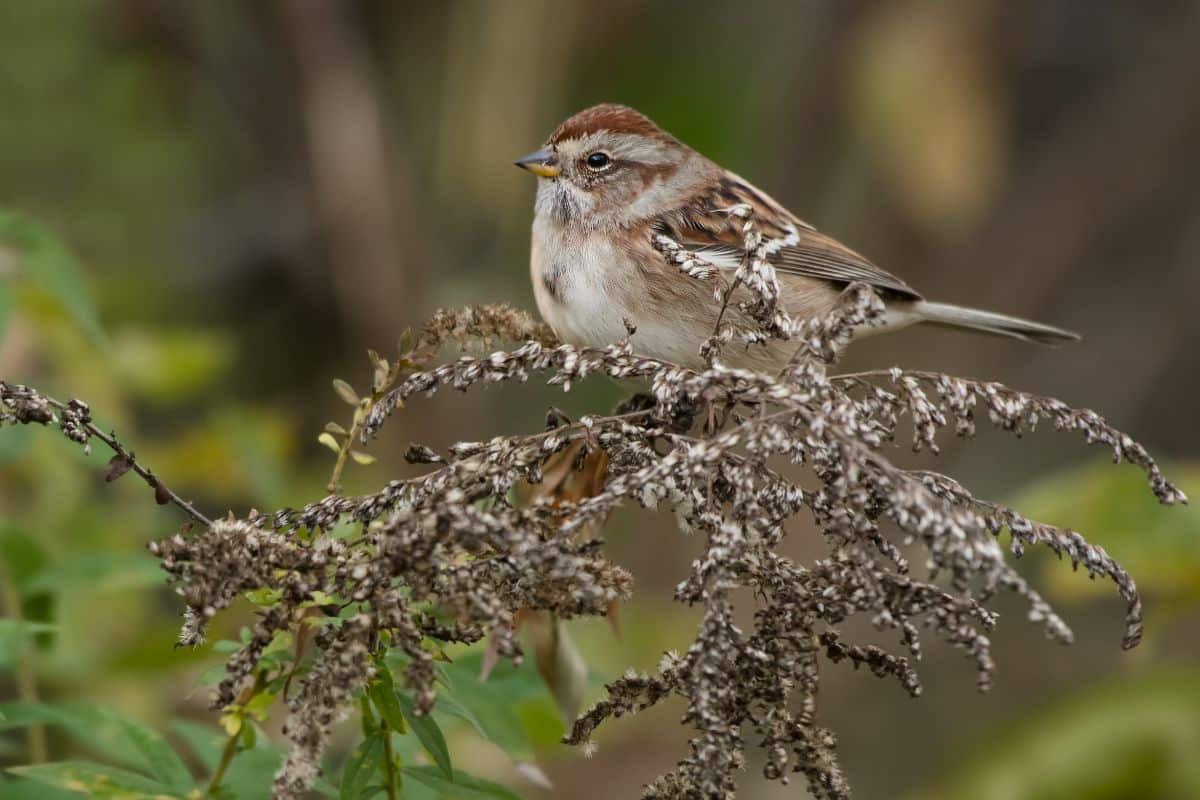
Native plants are plants that are naturally found in your growing location, so they are specially suited to your climate. Because these plants evolved in your particular growing zone, they usually are more adaptable to your local weather patterns and are hardier over all. This means they require much less fuss, and are usually better able to withstand pest predation and other stressors.
But that’s not all. Because native plants are naturally found in your area, they are perfectly adapted to the needs of your local bird populations. In fact, wild birds often seek out the fruit and seeds of native plants over non-native species.
The plants that are native to your space will vary, so you may need to do a bit of research to determine the right species for your garden. Online native plant finders can help; however, some classic native plant choices include:
- Purple coneflower
- Yarrow
- Goldenrods
- Assorted conifers
- Oaks
For best results in winter gardens, look for native plants that bear seeds or berries in winter, or provide an abundance of protective shelter or other essential features.
3. Use feeders properly
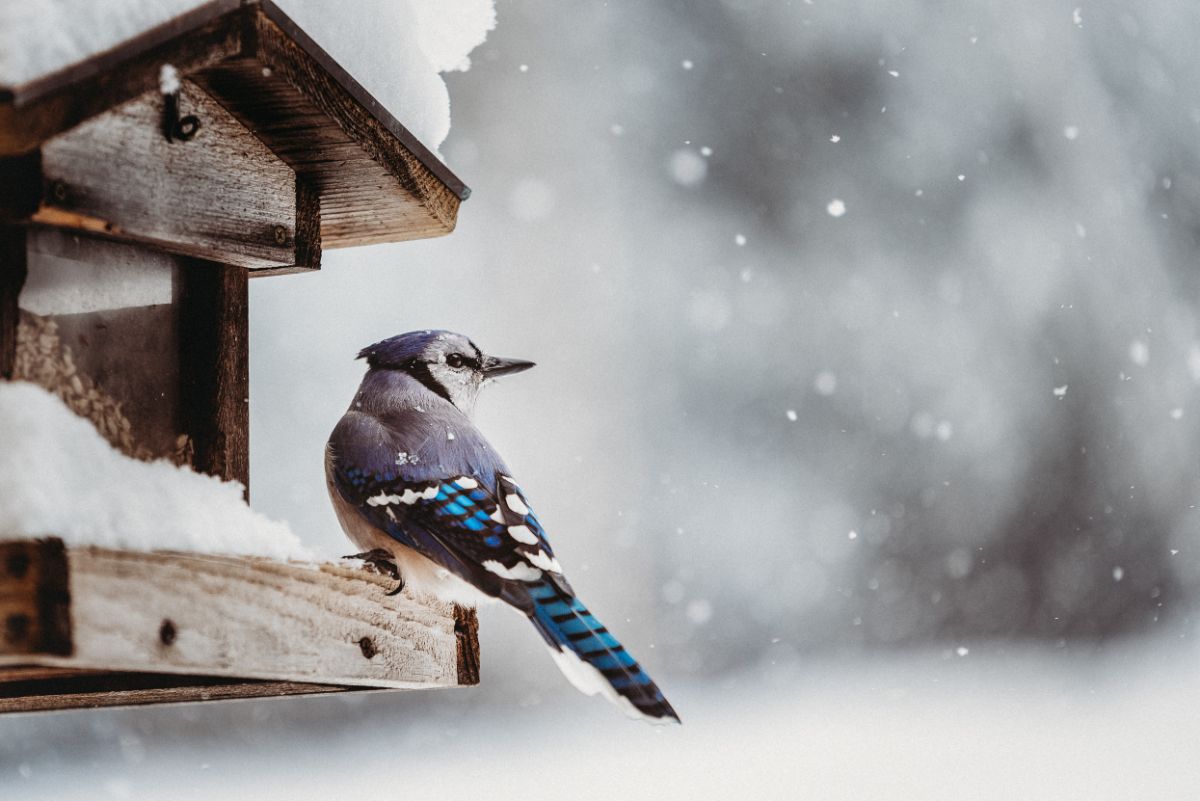
While many foods for visiting birds can be provided naturally with a few well-chosen plants, adding bird feeders can increase the diversity of foods you can offer. Bird feeders are also ideal for limited outdoor spaces or if you rent and it isn’t feasible to plant a bird-friendly garden.
A well-placed bird feeder near your window can provide hours of entertainment for you, your family and any indoor pets you have during the long winter months. While standard feeders are quite spacious and require less refilling, small window-mounted feeders can be especially delightful for bird watching. And, if you want to attract the most amount of birds, try out different sorts of feeders, such as thistle feeders for finches.
When using feeders, be sure to refill them regularly so that birds get used to visiting your space. Additionally, make sure that feeders have a proper overhang to keep seeds dry from the weather and remove old, wet or moldy food to keep your feeders clean and your wild birds healthy.
4. Try out different foods
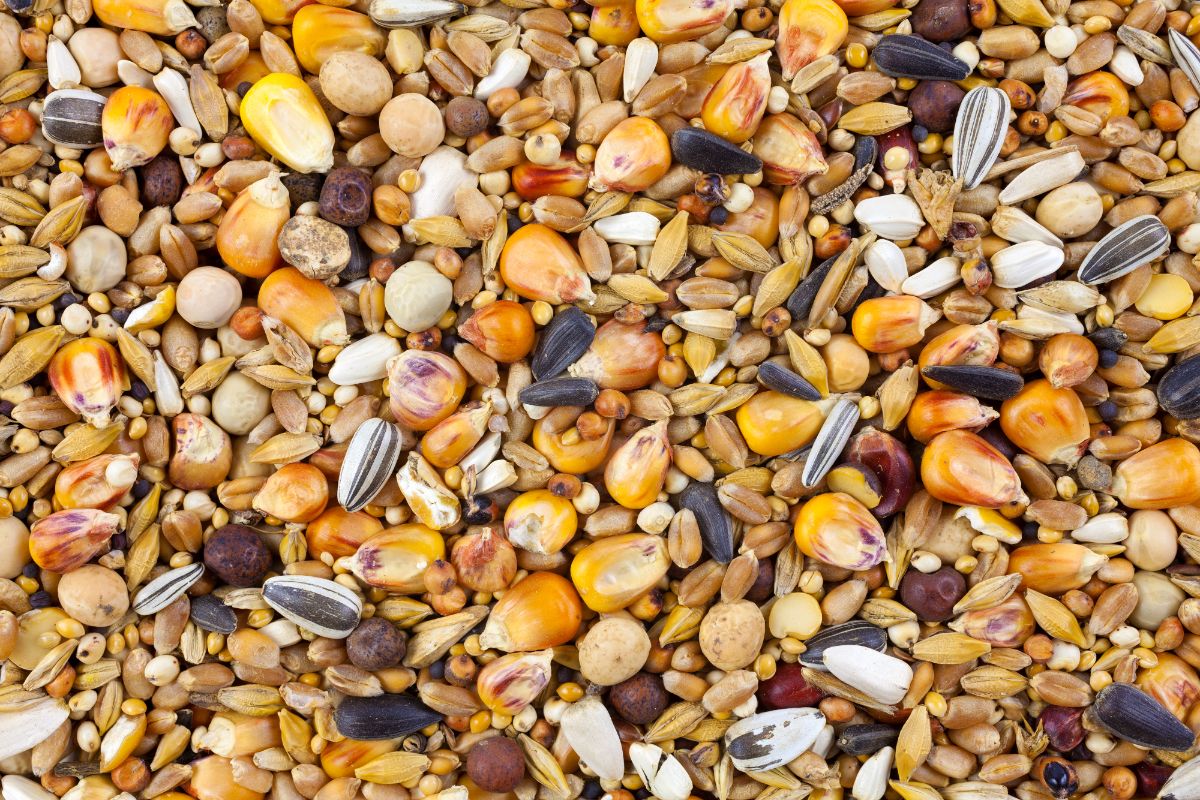
Just as different plants in your garden will provide different berries, seeds and other necessities for birds in winter, a well-chosen bird mix or seed blend can attract different bird types to your outdoor space. Since different birds prefer different diets, including as many different food types as possible will attract the greatest diversity of wildlife to your garden and also ensure that, no matter what birds visit, they’ll all find something nutritious to eat.
A quality wild bird seed blend is a good choice if you only have space for a single feeder. However, if you can hang up multiple feeders, try adding different seed types to each and see what you attract.
For some bird feed suggestions, try out:
- Black oil sunflower seeds. Rich in oil, this easy-to-find seed attracts many different bird types and are a great choice for increasing bird diversity in any backyard garden.
- Hulled sunflower seeds. Another versatile seed choice, hulled sunflower seeds have had their shells removed so they’ll create less mess in your backyard. The downside is that they are often more expensive.
- Striped sunflower seeds. More expensive than black oil sunflower seeds, striped sunflower seeds are more difficult for smaller birds to shell, so they’re not as versatile. That said, blue jays and cardinals love them.
- Safflower seeds. A favorite food choice of the Northern cardinal, mourning doves and house finches.
- Nyjer (thistle) seeds. A must-have if you want to attract finches, like purple finches and goldfinches. Mourning doves love this seed variety too.
- Ground-feeding birds, like doves, juncos, towhees and quails favor these small, round seeds.
- Whether fresh or dried, thrushes, robins and bluebirds can’t resist mealworms.
- Cracked corn. A perfect choice for attracting ground dwelling birds, like pheasants. Corn is also likely to lure in Eastern bluebirds and blue jays.
- Much beloved by squirrels and chipmunks, larger wild birds adore peanuts too. That makes peanuts a great pick for yards with magpies, woodpeckers and chickadees.
- Various fruit types are very attractive to different bird species, such as grosbeaks, northern flickers and buntings.
Because different bird foods come in different sizes, you’ll want to make sure the foods you pick will fit into your feeder. If you have the space for it, adding platform feeders or dedicated corn or nut feeders can help. Platform feeders, in particular, can fit a wide range of foods and are the perfect solution for feeding mealworms.
5. Install a heated birdbath
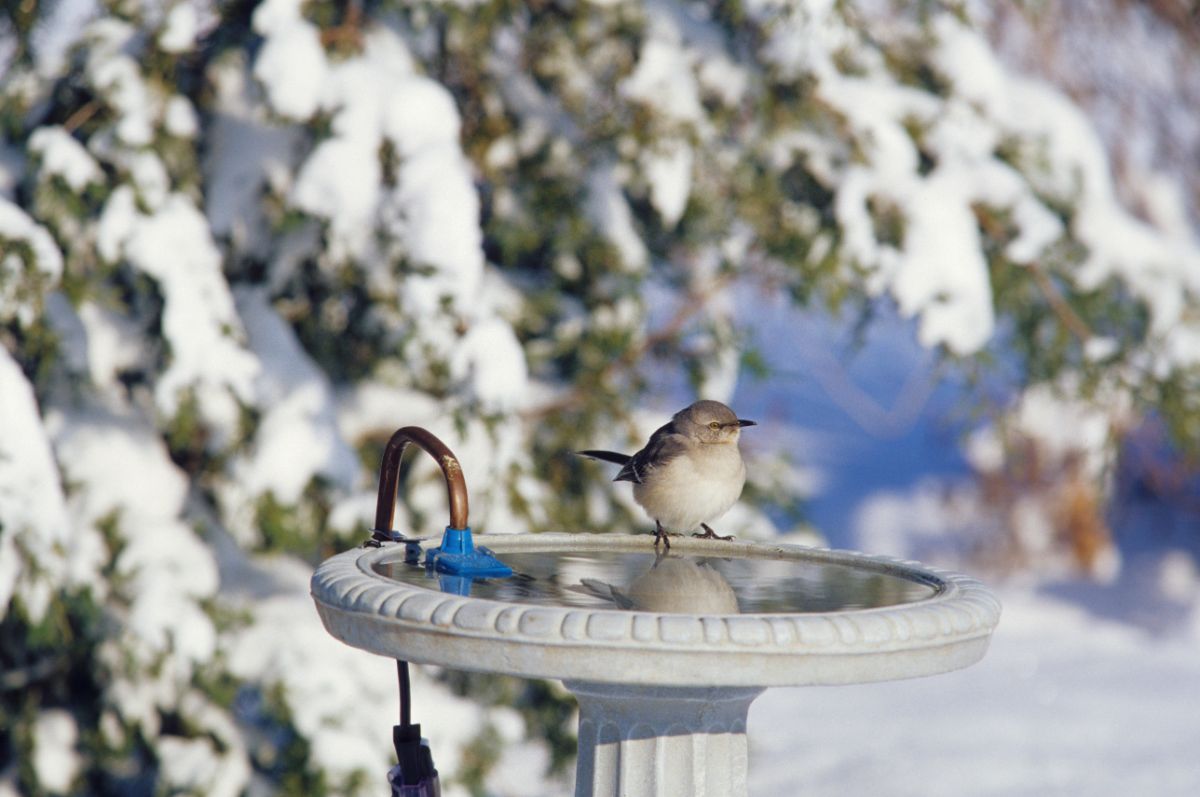
If you have a small pond or running stream in your backyard, additional water features may not be necessary for winter. However, even larger ponds can freeze solid if temperatures drop enough, so the addition of a heated bird bath can help guarantee wild birds have ready access to clean, fresh water all winter long.
There are tons of different types of heated bird baths that are super easy to install, run on minimal electricity and keep water temperatures just slightly above freezing, so you don’t need to worry about baths overheating. You can opt for a standalone bird bath, or add a heater specially created for bird bath use to a bird bath you already own. For an ultra-convenient solution, try out mounted bird baths that easily attach to the railing of a backyard patio or balcony and are ideal for small spaces.
Mounting your bird feeder on a flat platform (like a deck railing) can help ensure smaller animals, like chipmunks, can get a drink too.
If you have larger, ground-dwelling birds in your area, you can also consider adding a heated chicken waterer so they have something to drink too. However, for animal safety, opt for bird baths that are covered or are no deeper than 3” and have gently sloping sides so critters can easily climb in and out. Alternatively, add some small pebbles to the bottom of your bath so animals can get out if they accidentally fall in.
After installing your bird bath, be certain to maintain it by refreshing water daily and cleaning out the bird bath regularly too.
6. Plant evergreens
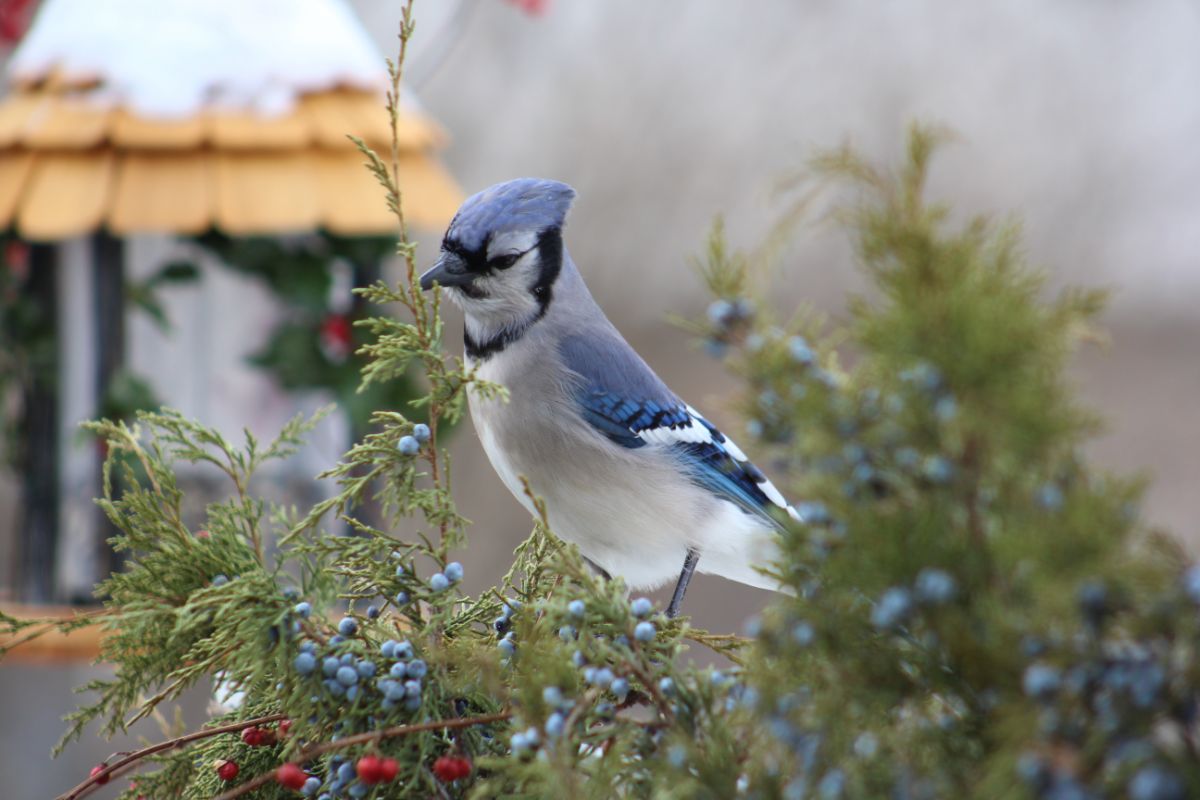
Pine trees, fir trees and holly bushes keep their leaves all year round, making them an excellent natural shelter for birds in winter. Additionally, their dense, leafy growth creates a natural windbreak to protect birds when they’re feeding or drinking from the worst of winter’s weather.
Many evergreens also provide berries and seeds (such as pine nuts), which are an essential food source for non-migratory birds. To get the most out of your evergreens, try to locate feeders and edible plants near your evergreen shrubs and trees, so birds don’t need to travel very far in search of food.
Beyond the plants listed above, some other evergreens that birds love in winter gardens include:
- Bayberry
- Cedar
- Huckleberry
- Juniper
- Hemlock
7. Don’t make beds “too tidy”
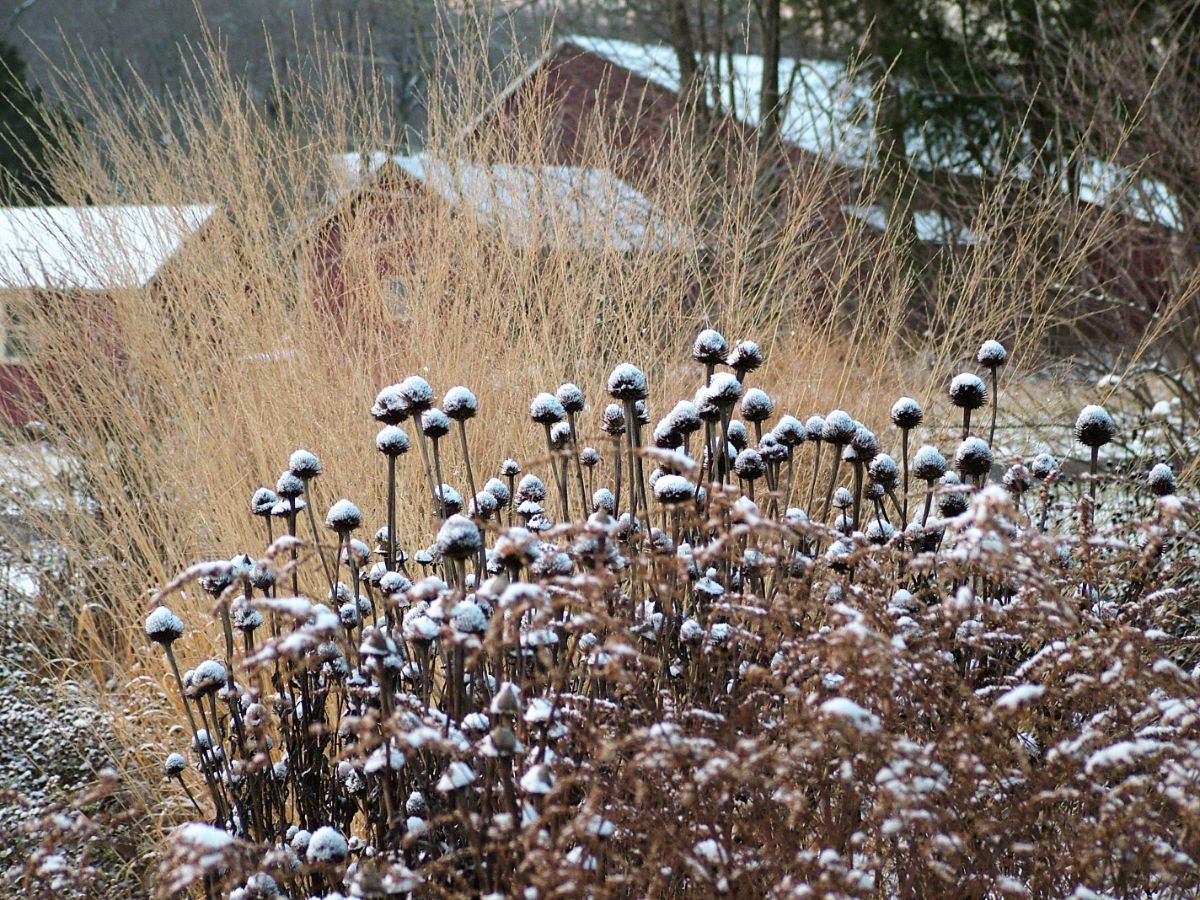
Late-blooming flowers like amaranth, purple coneflower, goldenrod and bee balm produce lots of protein-packed seeds in autumn. These seeds often last on the flowers well into winter, and are a great foraging source for wild birds.
While some garden cleanup in autumn is important to prevent overwintering pests and pathogens, leaving some plant debris in place can provide natural hides and additional food for birds in winter. For this reason, try to leave the seed heads of ornamental plants and wildflowers in place and only remove what you need to in order to prevent weeds and unwanted self-seeding.
Brush piles are another potential sheltering spot for birds in winter. So, if you didn’t get around to removing that old garden debris in autumn, don’t worry. It may benefit the wildlife in your garden this winter.
8. Hang roosting boxes
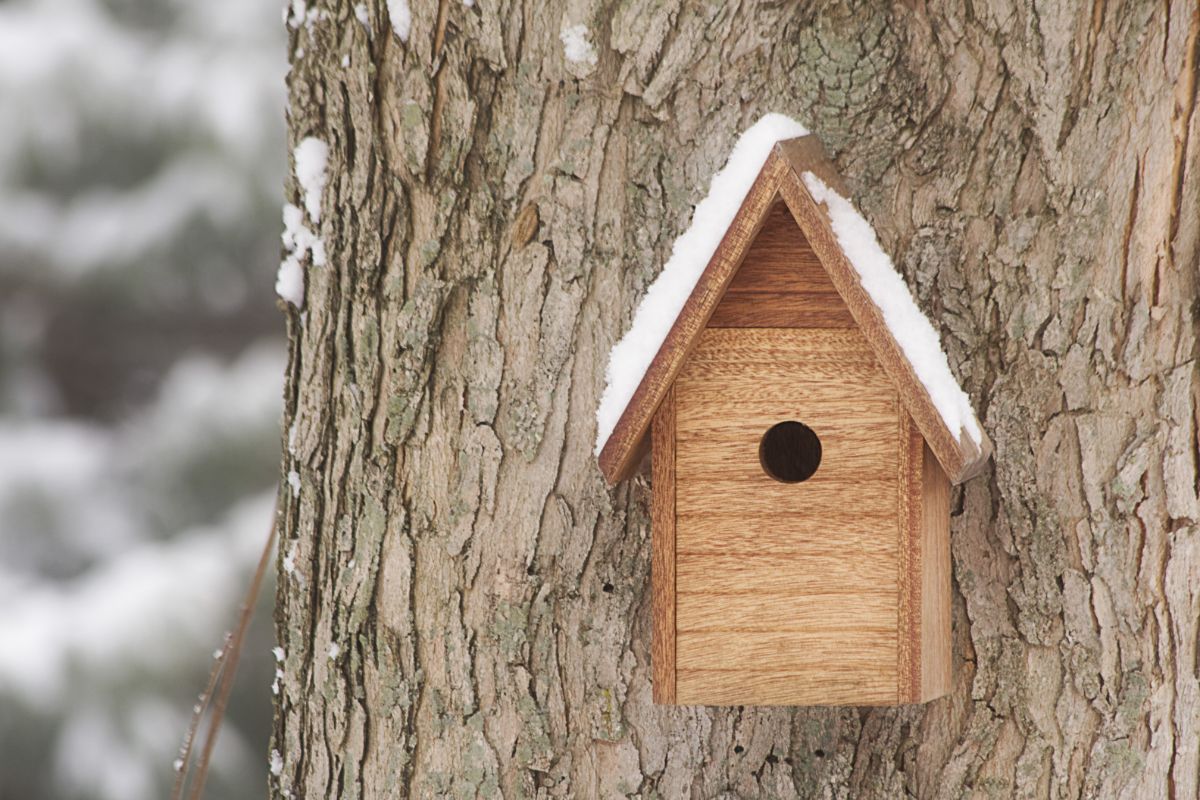
In spring and summer, bird houses offer safe housing for nesting birds and their hatchlings; however, bird houses can help shelter birds in winter too. Smaller birds will often overwinter in empty birdhouses, which will keep them warm and protected from the elements.
Because of their varying sizes, different types of bird houses will attract different types of birds, so be sure to pick the appropriate bird house size for the species in your area. Bluebird boxes are some of the easiest bird houses to come by, but you can also find wren houses, woodpecker houses and other species specific bird homes.
For even greater impact, try hanging some roosting boxes in winter. Roosting boxes are larger bird houses, often with an internal perch that birds can sleep on. Because of their larger size, 12 or more birds can usually fit into these winter homes and, by sleeping together, roosting birds will conserve heat and energy to help them better resist the winter’s chill.
9. Choose plants with long lasting seeds and berries
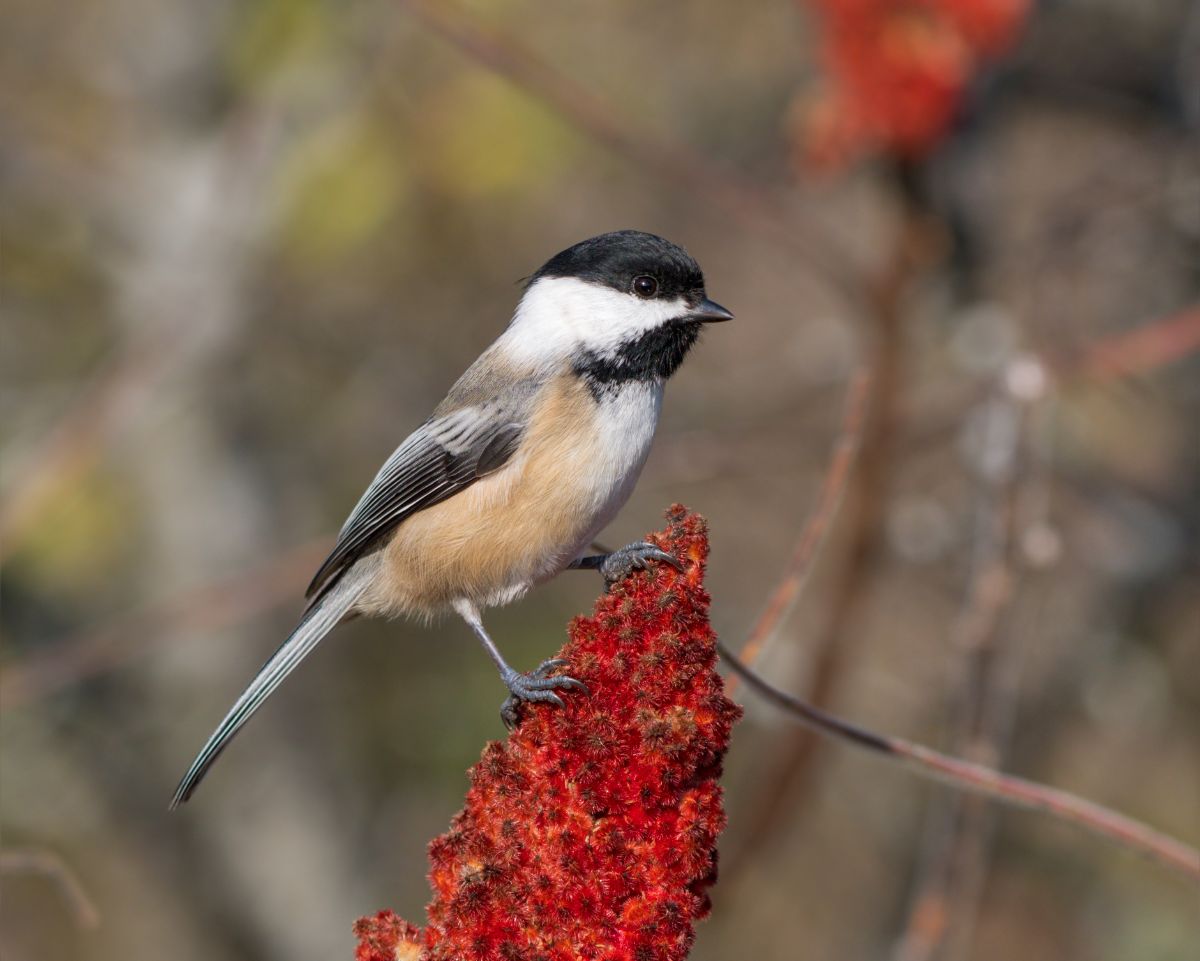
Bushes and trees that bear nuts and berries in late autumn and winter provide many benefits to the winter garden. Aesthetically, these plants can add a nice pop of color in your garden after the rest of your summer plants have faded. But this bounty of fresh food can also ensure overwintering birds have plenty to eat, even if you forget to refill your feeders.
While there are a number of plants that bear nuts and berries during winter, look for native species which will be more appealing to local wildlife, and opt for plants that hold their berries for a long time. Some good choices of winter-bearing plants to try include:
- Staghorn sumac
- Holly
- Hawthorn
- Viburnum
- Chokecherry
10. Attract insects
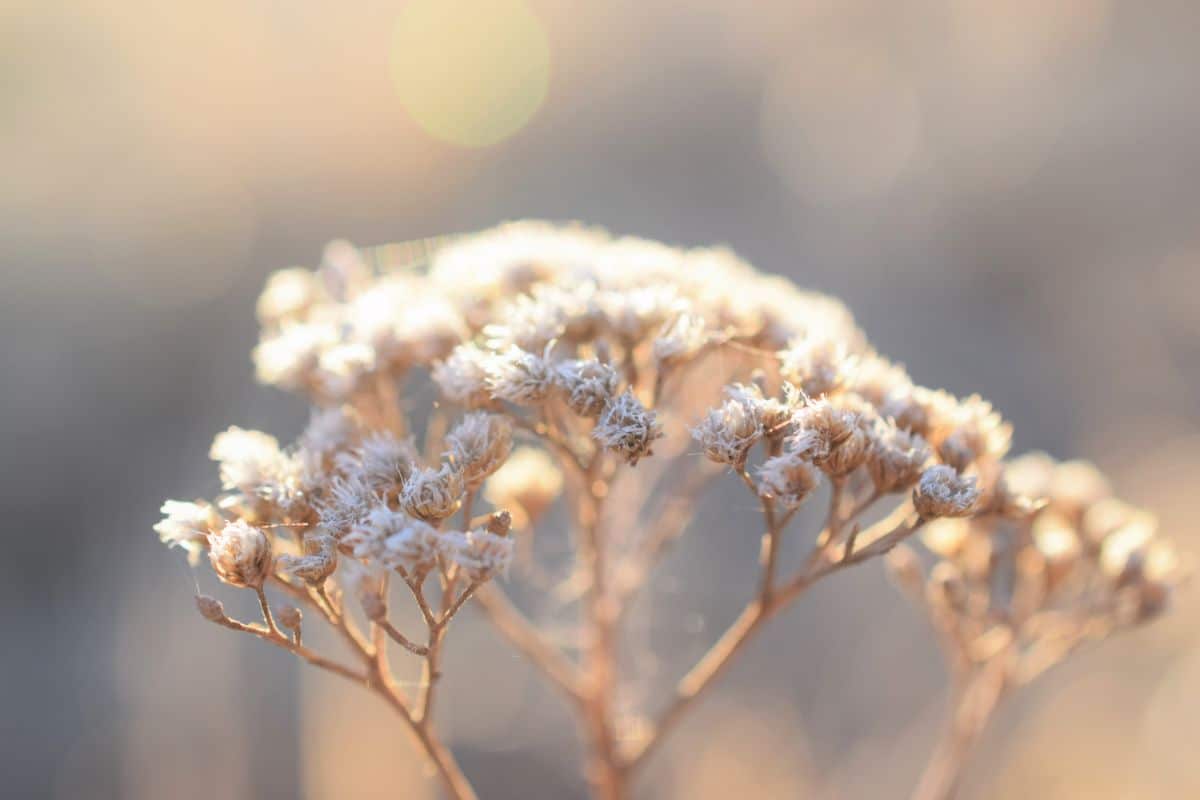
Many birds are naturally insectivorous, but in winter, insects are much less active and may be absent from your garden. As a result, birds (like cardinals) adapt their diet by favoring seeds and nuts in winter to supplement their food when insects are harder to come by.
But occasionally, throughout the winter months, a brief warm spell may cause insects to emerge for a few days to weeks. When they do, these cool weather insects will provide a much-needed protein boost for non-migratory birds.
While insects will be less active in any garden in winter, sowing certain plants can increase insect populations in your garden naturally -- even in the cooler part of the year. Some of the best plants for boosting beneficial insects in backyards are:
- Flowering chives
- Yarrow
- Sage
- Nasturtiums
- Purple coneflower
But beyond planting species favored by beneficial insects, the single best thing you can do to increase insect activity in your garden is to avoid using chemical pesticides whenever possible. Instead, select all-natural alternatives, like floating row covers and neem oil sprays, which are safer to use around bees and other wildlife.
11. Provide suet
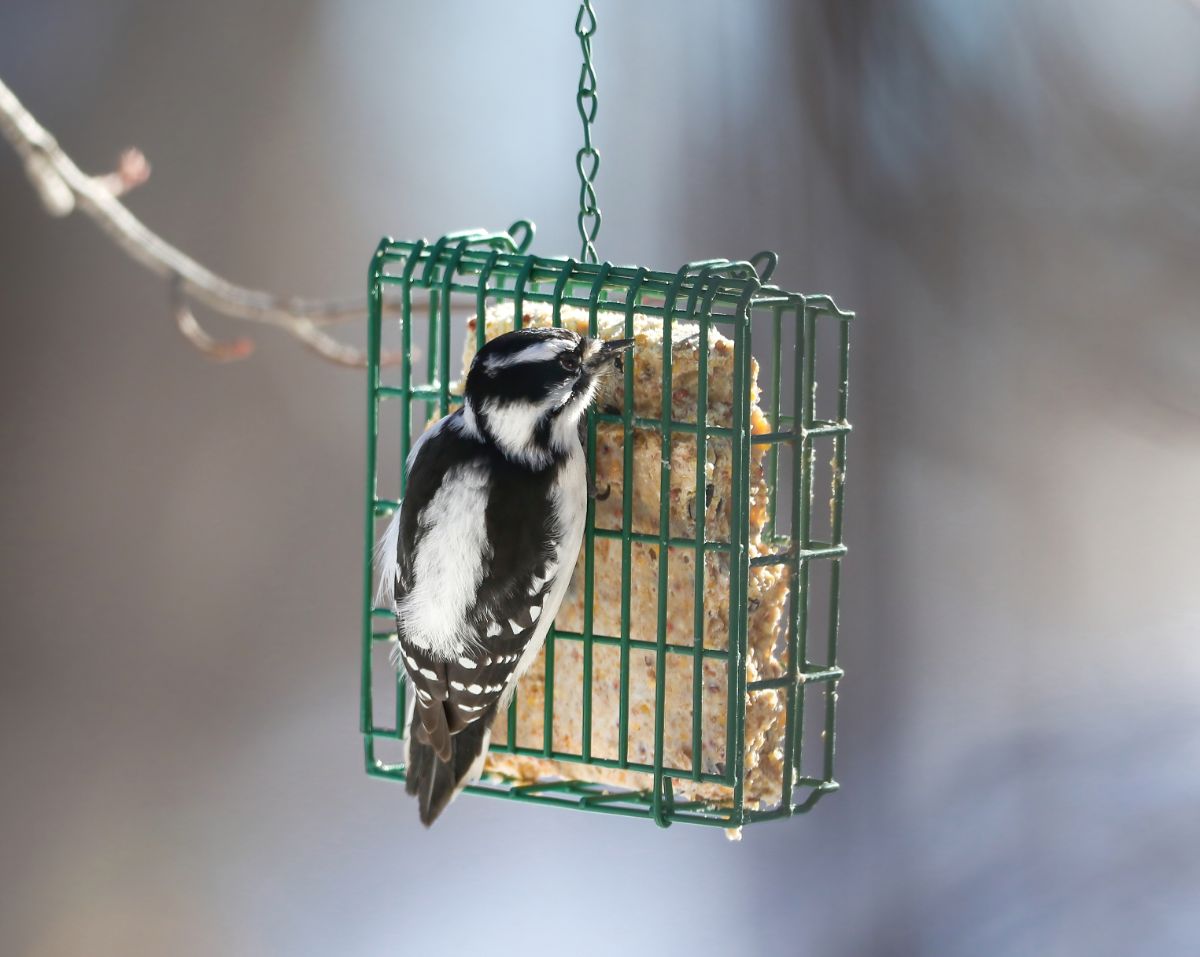
Suet is produced from beef fat and is a high-energy food that can help birds better resist the cold. While different species enjoy suet from time to time, adding some to your bird feeder station is a surefire way to attract woodpeckers, chickadees, nuthatches and warblers.
If you’re on a budget, you can make your own suet at home with just a few simple ingredients. But suet cakes are also readily available online and at many pet stores and garden centers. Many suet cakes are chocked full of other goodies, like nuts and dried fruit.
Tip: Placing your suet inside a suet feeder can help prevent the entire cake from being stolen by hungry squirrels and other backyard visitors!
12. Plant in clusters
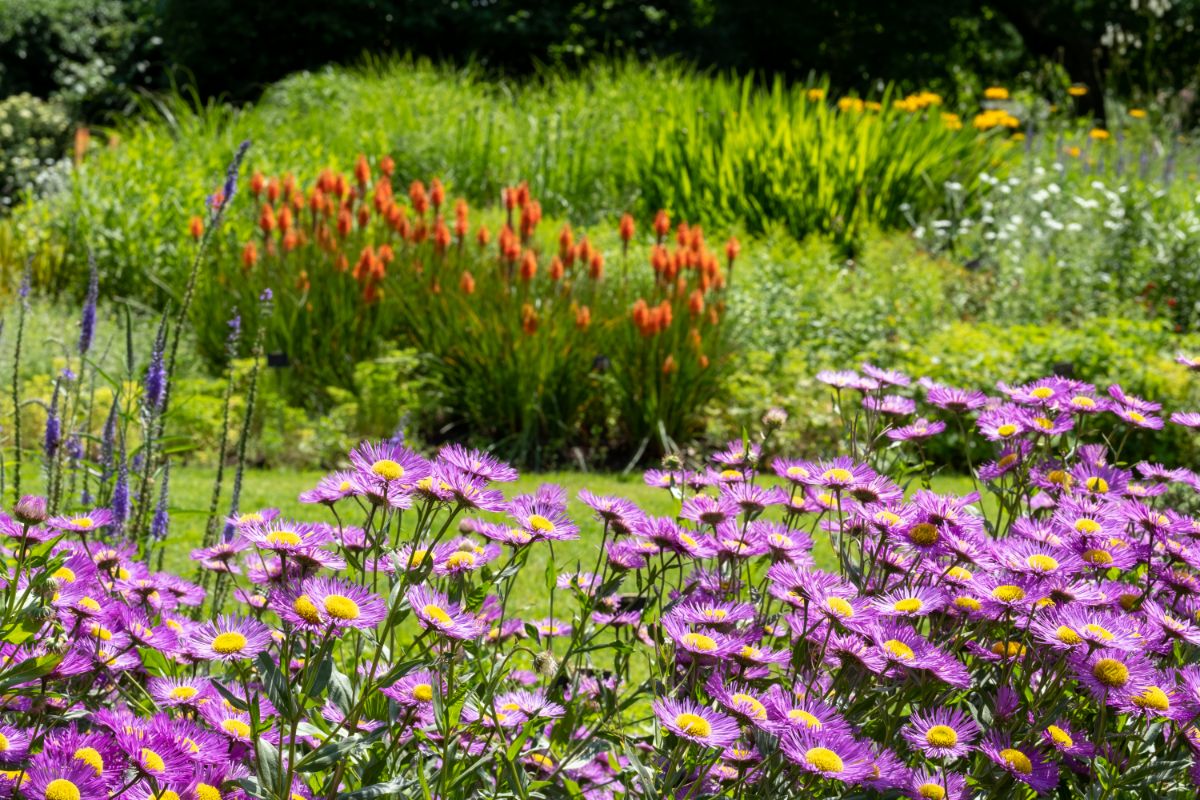
Summer or winter, organizing your ornamental plants in clusters has many benefits. Planting in groups of 3 to 5 creates a more natural look to your environment and a greater visual impact when plants bloom.
But this planting method also benefits overwintering birds as they won’t need to fly as far when foraging. Clusters of berry bushes will also be easier to spot from afar and, come spring, pollinators can more easily browse through garden beds as plants won’t be quite as spread out.
Frequently asked questions
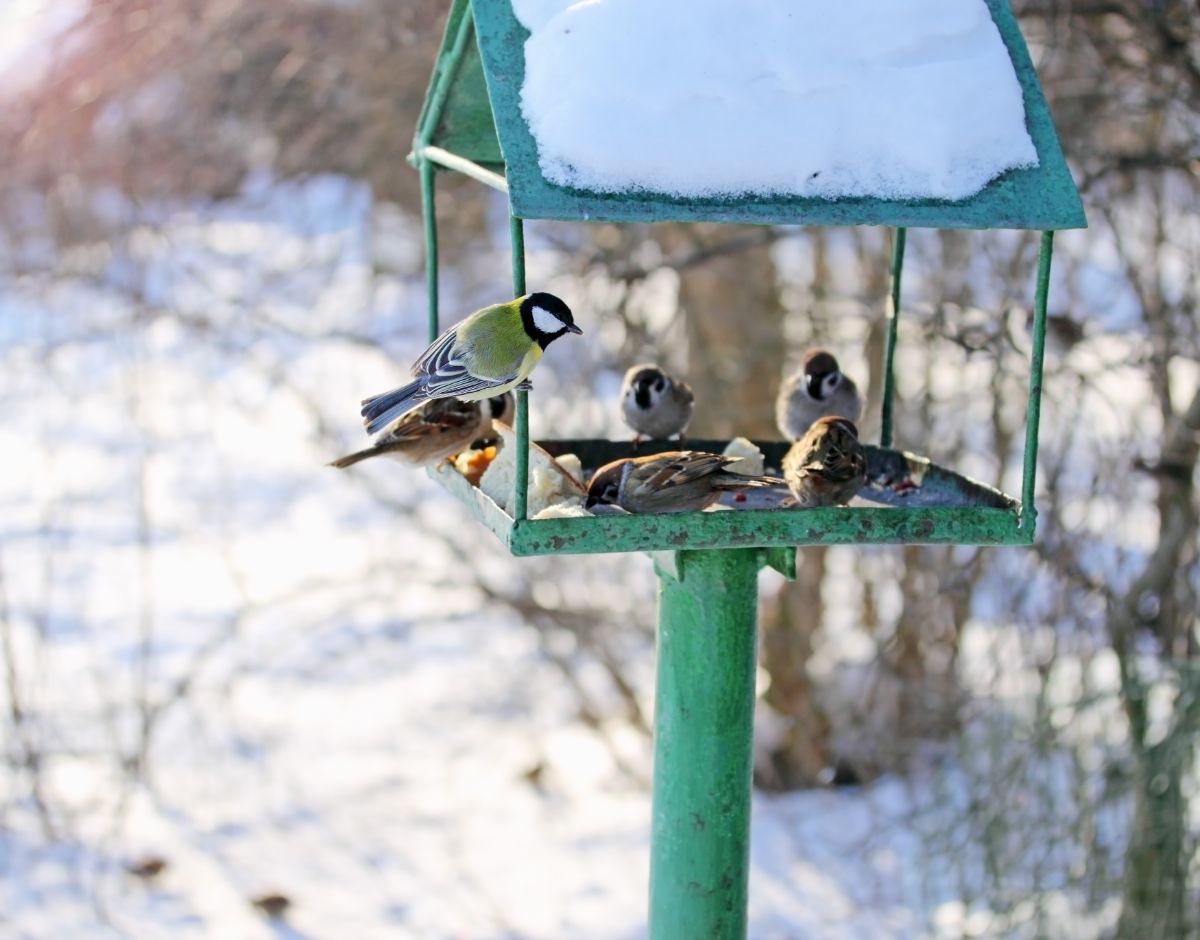
While different seeds will attract different birds, black oil sunflower seeds are the most versatile seeds around and adored by many different species. They’re even nicknamed the “hamburger” of bird seed since most birds love them so much.
Providing non-migratory birds with a ready source of food, water and shelter is the surest way to attract garden visitors to your outdoors space all winter long. That includes setting up a bird bath, adding feeders and native plants and providing shelter for roosting.
If you’ve just put out a new feeder, try filling it with some of the most coveted bird seeds at first to make it simply irresistible to wild birds. Hulled sunflower seeds, black oil sunflower seeds and safflower seeds are all good choices.
Some songbird species that naturally nest in tree cavities or birdhouses in spring will roost in birdhouses during the winter months too. These species include titmice, bluebirds and chickadees.
Summary
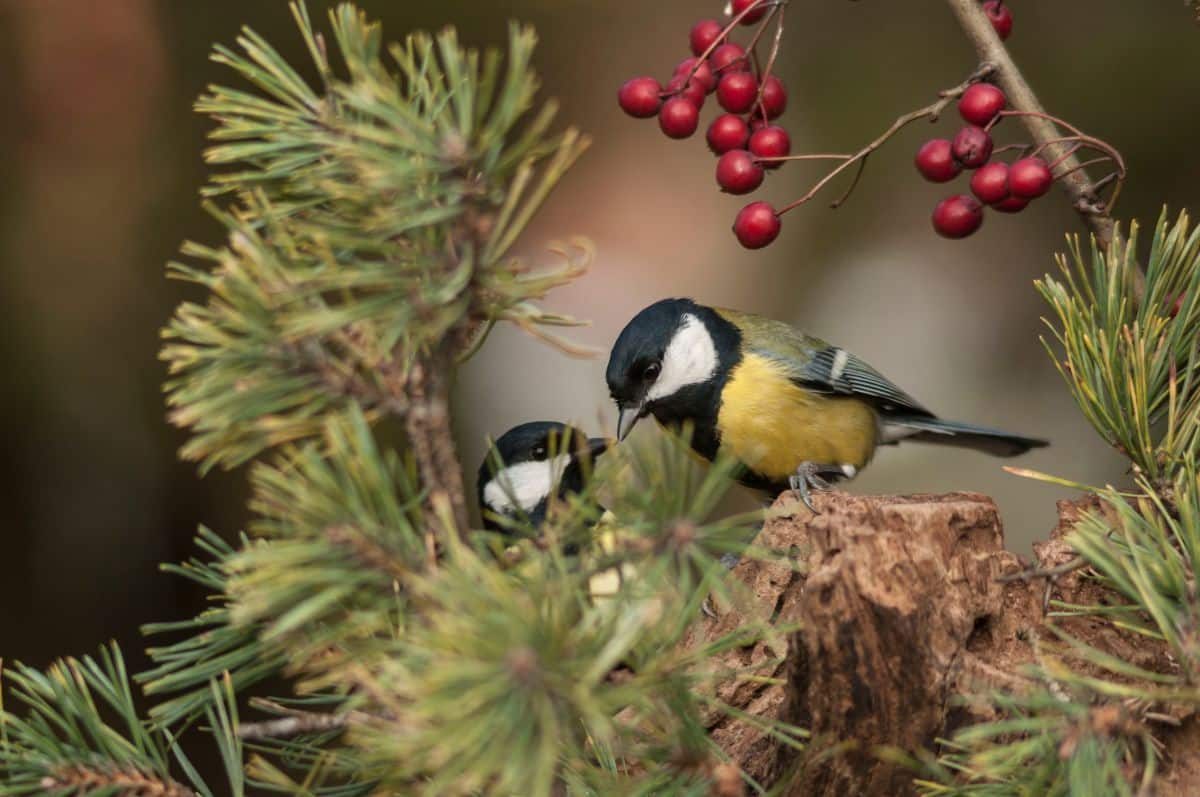
Wild birds are a welcome sight in the spring and summer garden; however, many non-migratory species can be spotted in your garden in winter too.
During the cooler part of year, when plants aren’t in bloom, there’s often a lot less for wild birds to eat. This makes creating a winter habitat for birds even more important during the winter months.
If you want to grow a winter garden for visiting birds, following the tips above should help. Depending on your gardening space, you don’t need to add every element, but the more tips you follow, the more likely you are to attract a wide variety of birds. However, a well-placed bird feeder and some native plants and evergreens can create an irresistible habitat for birds in winter too!
For more articles like this one, check out our piece on growing your own pollinator garden.

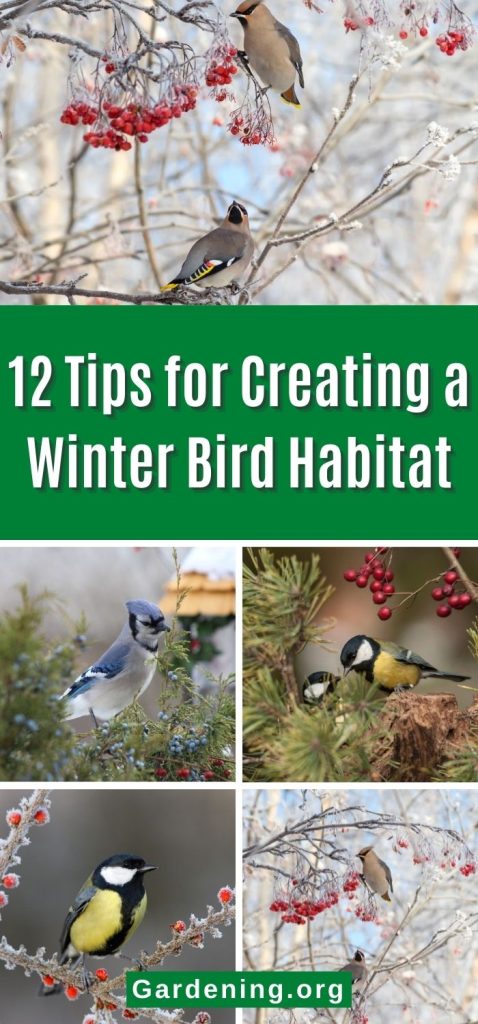
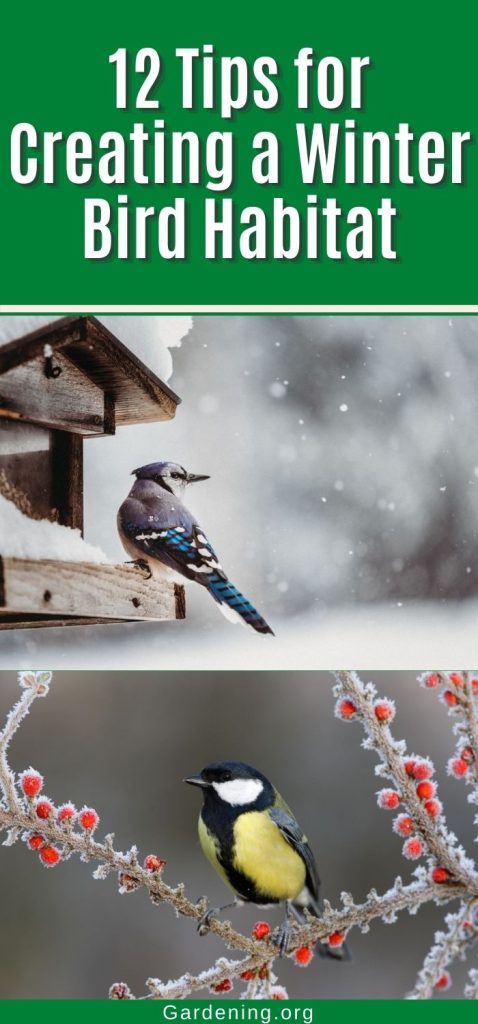

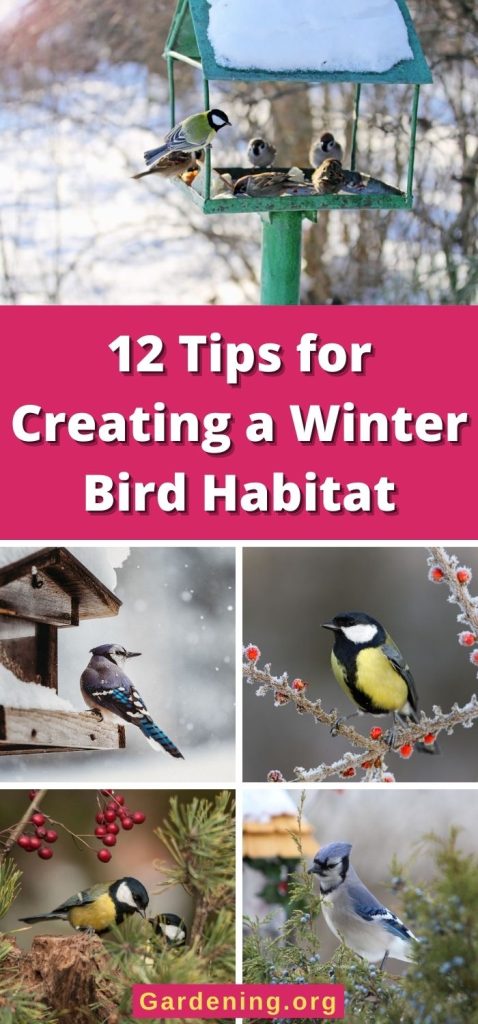








Leave a Reply